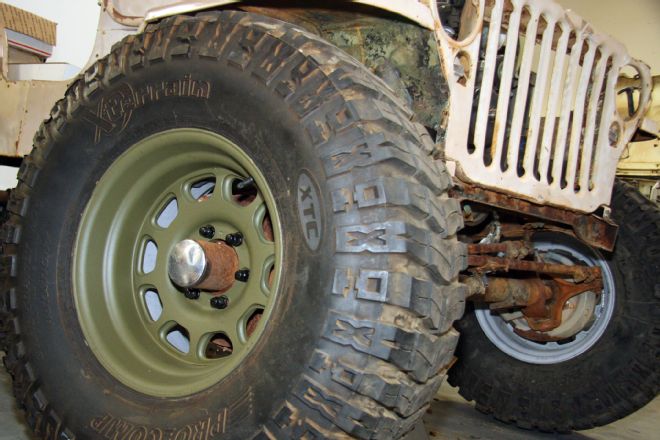
Wheels seem so simple. They're round, and we put tires on them to mount to Jeeps. Yet, just like tires are important because they're our contact to terrain, wheels affect handling, acceleration, braking, traction, and steering. Choice of wheel can make a big difference in some of these characteristics.
First, and foremost, is the choice of wheel diameter. As a minimum you'll need a wheel that can clear the brake components on your axles, and these have been growing in size over the past years. Larger and wider wheels mean greater weight which affects handling and rolling inertia, robbing some engine power. For off-road performance, we prefer to stick to the rule of thumb of running a wheel diameter no bigger than half the tire height. That typically means 15 or 16-inch wheels for 33s and 17-inch wheels for 35s or so. If you want sufficient sidewall flex on the trail, stay away from lower-profile tires.
Backspacing and offset are wheel dimensions used to describe where the mounting flange sits within the width of the wheel. Either dimension can be used but backspacing is usually easier to measure and reference. It’s simply the distance from the back outer lip or flange of the wheel to the mounting surface where the wheel bolts to the wheel hub or axle flange. Offset refers to the distance the mounting surface is from the centerline of the wheel. Offset is positive if the center of the wheel is moved inward toward the vehicle and negative if the center is moved outward. When going to larger and wider tires, you'll typically need to reduce backspacing to move the tire outward on the Jeep.
You can also widen vehicle track using aluminum wheel spacers. Quality spacers will typically never cause problems if used correctly and can be reliable for reasonable spacer thicknesses. Most issues we've seen are the result of undertorquing the nuts mounting the spacer to the axle, which results in a loose spacer, or overtorquing the studs in the spacer and stripping the stud splines in the aluminum. Adding wheel spacers will have the same effect on performance as running a wheel with reduced backspacing. Steering systems and front axles are often designed from the factory to pivot the tire near the center of the tread area. When using a wheel with less backspacing to widen track or fit a larger tire, more than half of the tire tread lies outboard beyond this centerline. This creates what is referred to as tire scrub. With excessive scrub, you may experience wandering and steering instability because the loading on the tire as it rolls down the road is no longer balanced.
If designing a rig from scratch and you're ordering custom axles or have the choice of axle width, consider going with an axle that will allow you to run a wheel offset that minimizes tire scrub. If you go to a narrower axle, and wheels with minimal backspacing, to get the track you want, the Jeep may not steer or handle well due to excessive tire scrub.
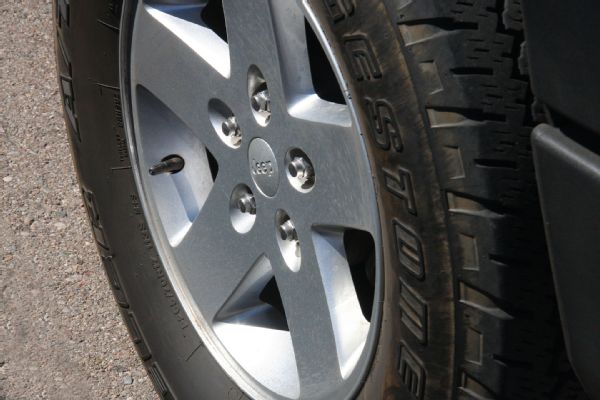 Most stock Jeep wheels these days have a large backspacing distance (positive offset), so with the wider axle width, this keeps the tires tucked back into the body. The factory designed it this way to help optimize steering behavior and have minimal tire scrub.
Most stock Jeep wheels these days have a large backspacing distance (positive offset), so with the wider axle width, this keeps the tires tucked back into the body. The factory designed it this way to help optimize steering behavior and have minimal tire scrub.
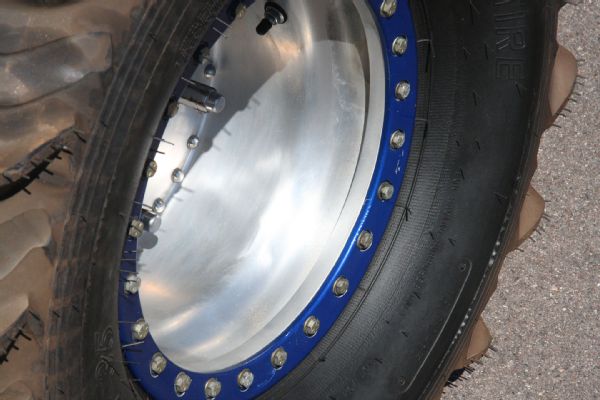 Deep-dished wheels with reduced backspacing (negative offset) may be necessary to accommodate very wide wheels and tires and clear the chassis. Doing so increases leverage on the axlehousing and can result in accelerated wheel bearing wear, plus greater stress on the outboard axle components.
Deep-dished wheels with reduced backspacing (negative offset) may be necessary to accommodate very wide wheels and tires and clear the chassis. Doing so increases leverage on the axlehousing and can result in accelerated wheel bearing wear, plus greater stress on the outboard axle components.
 Wheel width will affect overall tire section width and can affect tread footprint. A wider wheel will usually allow a tire to flatten out a bit more. A narrow wheel will produce more sidewall bulge than a wider wheel, offering more protection to the wheel. Most tire manufacturers will list mounted tire sizes and recommended wheel widths for their tires.
Wheel width will affect overall tire section width and can affect tread footprint. A wider wheel will usually allow a tire to flatten out a bit more. A narrow wheel will produce more sidewall bulge than a wider wheel, offering more protection to the wheel. Most tire manufacturers will list mounted tire sizes and recommended wheel widths for their tires.
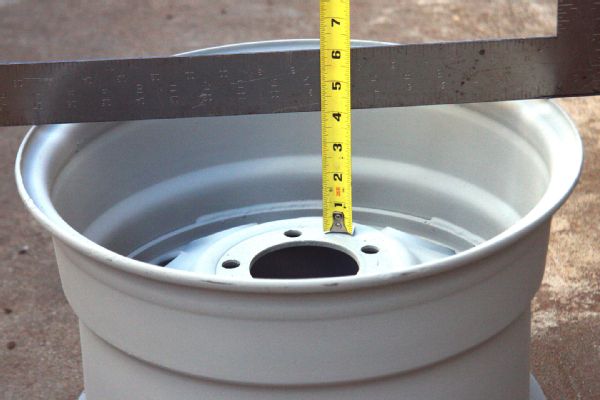 Measuring backspacing is simple: Lay a straightedge across the backside flange of the wheel and find the distance from that edge to the wheel mount surface on the back of the wheel. Offset is calculated by subtracting the backspace dimension from the overall wheel width, then dividing that number in half.
Measuring backspacing is simple: Lay a straightedge across the backside flange of the wheel and find the distance from that edge to the wheel mount surface on the back of the wheel. Offset is calculated by subtracting the backspace dimension from the overall wheel width, then dividing that number in half.
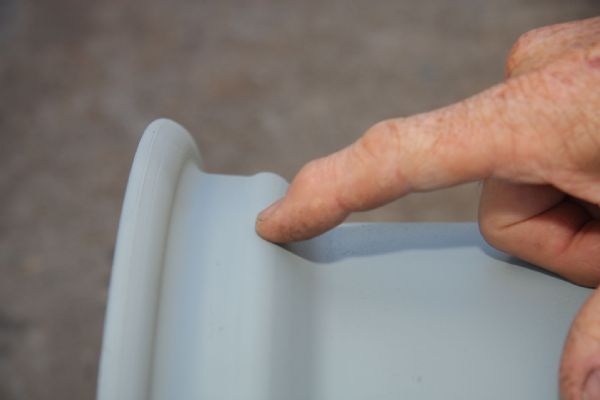 The bead of the tire sits just inside the outboard flange on the bead seat. The bead seat also has a small raised area on it called the safety hump, which is used to improve tire retention on the bead. Short of going to some type of beadlock wheel, we've seen guys add weld bead along this line on steel wheels to increase the tire retention.
The bead of the tire sits just inside the outboard flange on the bead seat. The bead seat also has a small raised area on it called the safety hump, which is used to improve tire retention on the bead. Short of going to some type of beadlock wheel, we've seen guys add weld bead along this line on steel wheels to increase the tire retention.
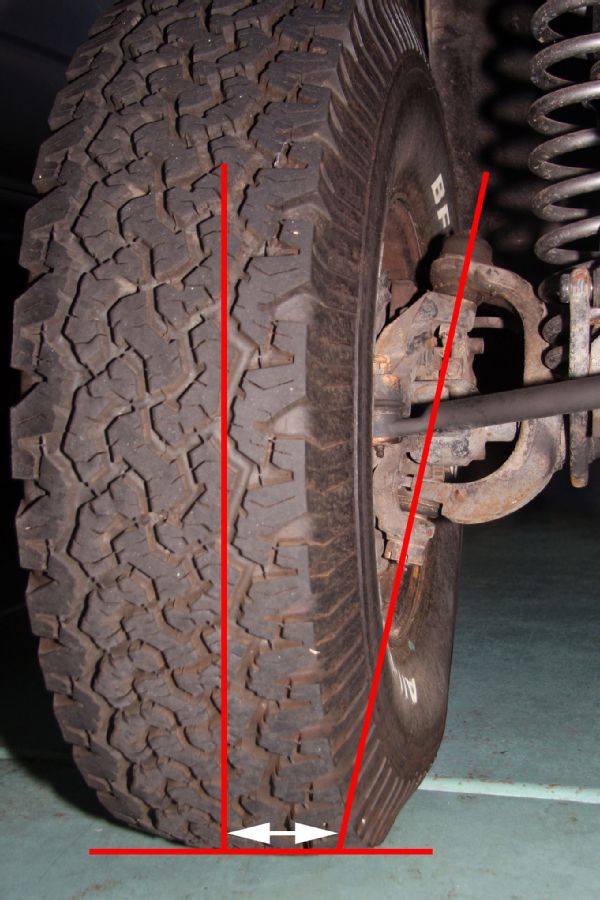 Draw a line through the steering axis to a point where it touches the ground. From this point to the centerline of the tire contact patch is the scrub radius (dimension shown here). Using wheels with less backspacing or adding wheel spacers will push the tire out and away from the centerline of the knuckle. This increases scrub radius, can require greater steering input from the driver, and can lead to increased road wander and tire wear.
Draw a line through the steering axis to a point where it touches the ground. From this point to the centerline of the tire contact patch is the scrub radius (dimension shown here). Using wheels with less backspacing or adding wheel spacers will push the tire out and away from the centerline of the knuckle. This increases scrub radius, can require greater steering input from the driver, and can lead to increased road wander and tire wear.
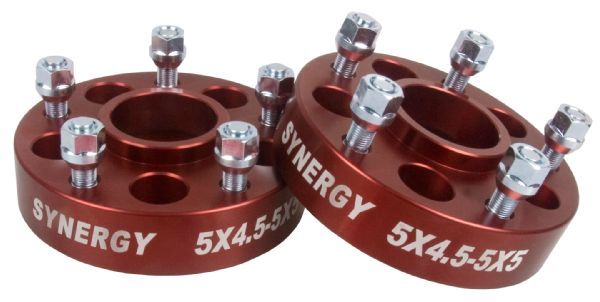 Aluminum wheel spacers, such as these from Synergy Manufacturing, offer a way to widen your overall track and gain inside tire clearance without having to buy new wheels. Where possible, the use of hub-centric spacers (shown here) is preferred for alignment over lug-centric spacers. Hub-centric spacers have a raised ring to mate with the center hole of the wheel, whereas lug-centric spacers align only on the lug studs.
Aluminum wheel spacers, such as these from Synergy Manufacturing, offer a way to widen your overall track and gain inside tire clearance without having to buy new wheels. Where possible, the use of hub-centric spacers (shown here) is preferred for alignment over lug-centric spacers. Hub-centric spacers have a raised ring to mate with the center hole of the wheel, whereas lug-centric spacers align only on the lug studs.
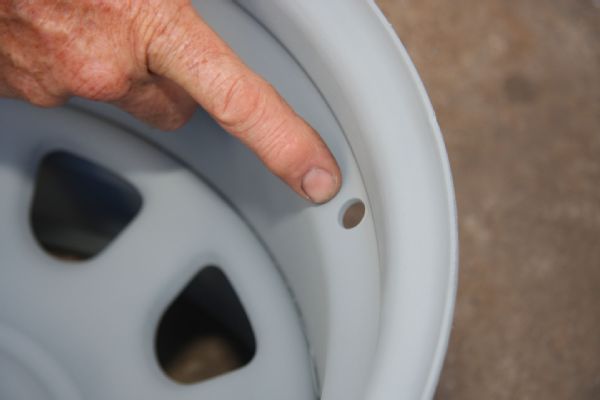 When choosing wheels for off-road use, make note of where the valve stem is located and how vulnerable it may be to rocks and other hazards that may enter the wheel. There is some variance in location across wheels. Use of full rubber valve stems, as opposed to those that use metal tubes, may prove to be more forgiving when brushing against a rock or other object.
When choosing wheels for off-road use, make note of where the valve stem is located and how vulnerable it may be to rocks and other hazards that may enter the wheel. There is some variance in location across wheels. Use of full rubber valve stems, as opposed to those that use metal tubes, may prove to be more forgiving when brushing against a rock or other object.
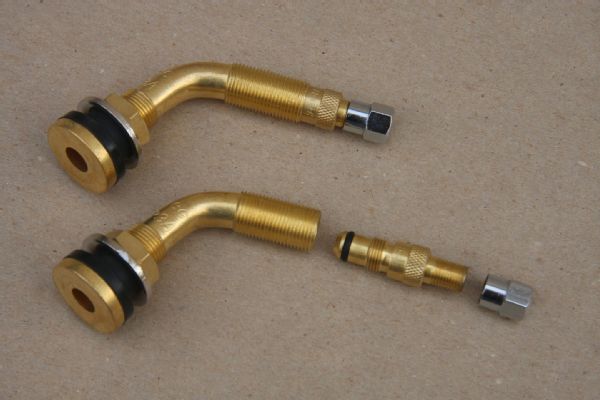 One trick we like to use on our wheels is to add a second valve stem 180 degrees from the original valve stem. We like tractor tire stems used for adding water to industrial tires. They are a two-piece stem. Pulling the main stem core exposes a large orifice which allows for really fast air-down times.
One trick we like to use on our wheels is to add a second valve stem 180 degrees from the original valve stem. We like tractor tire stems used for adding water to industrial tires. They are a two-piece stem. Pulling the main stem core exposes a large orifice which allows for really fast air-down times.
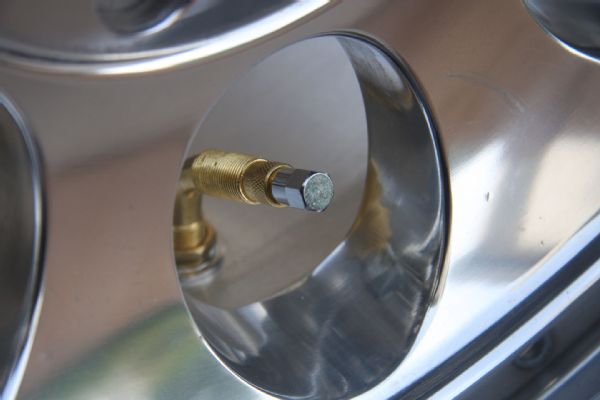 You can mount the tractor valves on the backside of the wheels to keep them out of harm’s way. We like the angled ones that you can access through one of the wheel slots or holes.
You can mount the tractor valves on the backside of the wheels to keep them out of harm’s way. We like the angled ones that you can access through one of the wheel slots or holes.